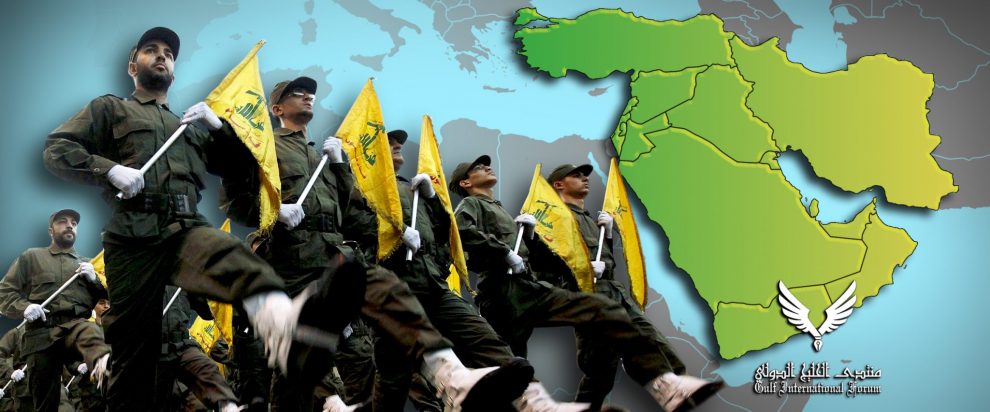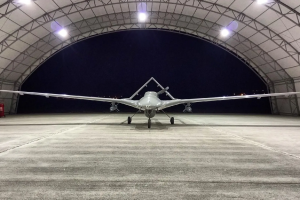Since the end of the Second World War, open military conflicts between global and regional powers have been eclipsed by proxy wars in which major powers compete for relative advantage in a third country. The nature of proxy conflict has transformed over time and varies from country to country, but in its most basic form consists of local forces—also known as ”agents”—fighting on behalf of a foreign backer, the “principal.”
Rarely are the local agents entirely beholden to their foreign patrons. In most cases, domestic actors have their own interests, such as a low-level grievance against a domestic enemy that is amplified by foreign sponsorship. Although in some cases the objectives of major powers are disguised as local issues, it is usually the case that warring parties within a proxy conflict are fighting to advance their own aims, which are not necessarily synonymous with those of their supporters.
Rewriting an Old Script
Great powers have often used foreign proxies to advance their interests. However, the frequency and severity of proxy wars increased dramatically with the invention of nuclear weapons, which made direct military conflict between the world’s two superpowers—the United States and the Soviet Union—impossible. Throughout the Cold War, the United States, the Soviet Union, and to a lesser extent China leveraged the power of proxy forces. With the beginning of the twenty-first century, regional powers like Iran and Saudi Arabia in the Middle East increasingly began to use surrogates to realize their geopolitical goals in a cost-effective and (at least domestically speaking) bloodless manner. Within the Middle East, Iran has used proxies more effectively than any other country. In fact, Iran might have more than one hundred militant armed organizations across the Middle East, ranging in size from small militias in Iraq to 100,000 member-strong Hezbollah in Lebanon, which is thought to be more powerful than the Lebanese armed forces. Thanks to these proxy groups, Iran has become a regional power broker and has gained outsized influence throughout the Arab world, particularly in countries that face instability such as Iraq, Lebanon, Syria, and Yemen.
The Iranian regime is often blamed for masterminding the wars perpetrated by its militant groups. Although Tehran has consistently denied these allegations, the facts on the ground say the opposite. Iran’s use of proxy groups dates back to the early 1980s, when Israel invaded Lebanon in 1982 to expel the Palestine Liberation Organization (PLO) from Beirut. Recognizing an opportunity to hurt Tel Aviv and boost its outreach among Shi’a Arabs, Iran sent the Islamic Revolutionary Guard Corps (IRGC) to Bekaa Valley and trained the Shi’a militias that later became the core of Hezbollah, which has dominated Lebanese politics since 2005.
Acknowledging Hezbollah’s effectiveness, the IRGC established a paramilitary organization called the Quds Force, which reportedly consists of 15,000 soldiers and oversees the operations of between 130,000 and 180,000 local militants. The Quds Force currently supports Hezbollah in Lebanon, the Houthi movement in Yemen, the Popular Mobilization Forces in Iraq, Liwa Fatemiyoun in Afghanistan, Hamas (a Sunni organization) in the Gaza Strip, Liwa Zainabiyoun in Pakistan, the Rasulallah Corps in Arabian Peninsula, the Levant Corps in Syria, Lebanon and Jordan, the Ramazan Corps in Iraq, and the Ansar Corps in Afghanistan. The Quds Force has also sought to expand its operations into neighboring Azerbaijan; a group called the Huseyniyyun already exists in Azerbaijan, but little is known about its activities. There are also sub-proxies operating under each of these groups. For example, there are more than twenty Iranian proxies in Syria, which Iran spent around $15 billion to recruit, train, and equip.
Why Proxies Fight
The extent to which Iran has used Shi’a religious fanaticism as a major weapon in its proxy recruitment is not entirely clear. Tehran has certainly recruited foot soldiers in its proxy conflicts through non-payable spiritual awards like the “promise of heaven”—that is, enticing local Shi’a Muslims to sacrifice their lives for their religious cause and benefit after death. At the same time, however, it also reliably pays a typical monthly salary (estimated at between $500 and $1000) to militants and offers social rights in Iran, such as right of residence and citizenship. Outside observers have warned that Tehran has fostered an increasingly dependent relationship with its foreign partners, effectively binding local religious or ethnic groups to its service. Although this trend gives Tehran a reliable pool of recruits, it also decreases local forces’ morale and hence their reliability.
Several reasons may explain Iran’s reliance on proxies. First, the Islamic Revolution has called for Iran to export its ideology since Ayatollah Ruhollah Khomeini took power in Iran in 1979. Indeed, Tehran has sought to spread its version of theologic governance via clerics and proxies in other countries. Second, the regime uses Shi’a minorities and their grievances within neighboring Arab countries, most clearly in Lebanon and Iraq, to maintain its influence where it would otherwise have virtually no say in the country’s politics. Third, proxies are used to counter the actions of hostile countries like Saudi Arabia and Israel. While Iran has never started an open war with any of its rivals (a fact that the government’s defenders often cite to excuse its actions), its proxies fight to create chaos and instability and undermine those rivals’ security. Finally, Tehran’s reliance on militias is a sign of hardliner’s growing influence, particularly that of the IRGC, within Iran’s decision-making circles and foreign policy apparatus. Security officials within the Iranian government have a distinct advantage over politicians because they can honor their country with foreign victories. Because Iran’s proxy policies have been so successful, military elites have seen their clout within the government grow.
All Roads Lead to Tehran
With the help of its proxies, Iran now has a hegemonic control over Iraq, Lebanon, northern Yemen, and to some extent Syria, and threatens to dominate other countries. In some states Tehran has not initiated wars but simply benefited from its forces’ ability to organize amid general lawlessness, as the case of Iraq demonstrates. When the U.S.-led coalition left Iraq in 2011, Iranians entered and effectively controlled the country through their political influence over Shi’a political parties and militias. In Syria, the Assad regime, a long-standing ally of Tehran, facilitated Iran’s intervention in the Syrian conflict. Regardless of the circumstances Iran has exploited to infiltrate these countries, proxies have always served as the preferred conduit of Iranian influence.
Thanks to proxies, Iran—which is economically weak and has had great difficulty controlling its increasingly discontented citizenry—has nonetheless exerted control over millions of Arabs outside its borders. Although it is hard to say that this influence has brought peace, it has unquestionably strengthened Tehran’s international standing and transformed the Islamic Republic into one of the most influential (albeit widely despised) regimes in the Middle East.
Source: Gulf International Forum






